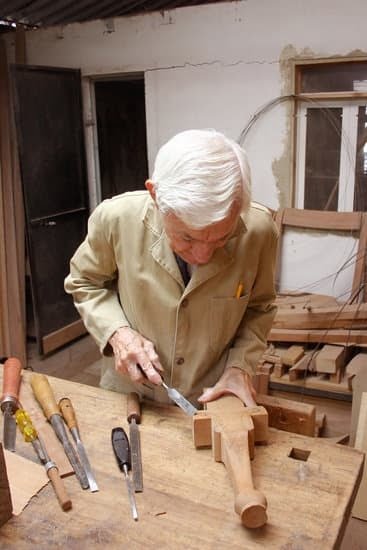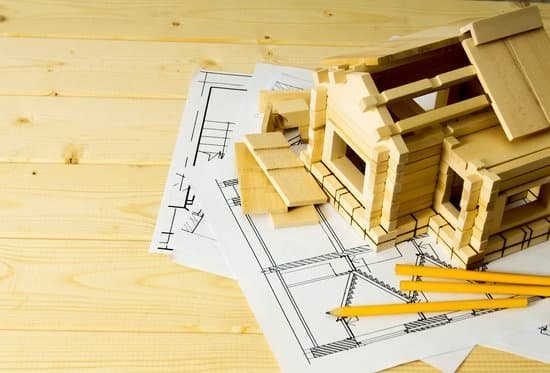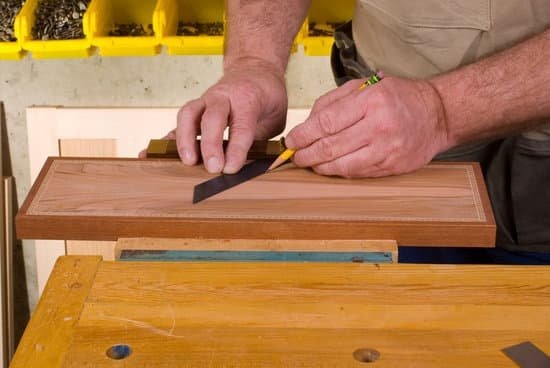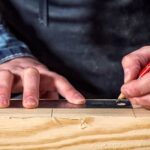Introduction
Clear epoxy is becoming increasingly popular when it comes to woodworking projects. It offers a number of benefits that make it particularly appealing, including its durability and strength. When applied correctly, clear epoxy creates a rigid bond between the two surfaces being joined”even stronger than nails or screws”which means fewer joints need to be made. Clear epoxy is also water-resistant and heat-resistant making it an ideal choice for outdoor furniture or kitchen countertops. Plus, other adhesives are notoriously messy and difficult to work with while clear epoxy provides clean edges with no dripping or bleeding on the project surface. Additionally, the glossy finish created by this material makes it perfect for achieving a professional look on furniture pieces and other woodworking projects. Furthermore, since clear epoxy can be tinted any color, it allows you to customize the appearance of your finished product by mixing in your own hues so that every item looks uniquely yours!
What Is Clear Epoxy and What Types Are Best for Woodworking?
Clear epoxy is a strong, durable epoxy resin which can be used to join, fill and seal surfaces including wood. When applied properly it forms a waterproof bond that won’t crack, shrink or degrade over time. There are various types of clear epoxy designed specifically for use in woodworking and each has its own strengths and weaknesses. Generally speaking, two-part epoxies are the most suitable option as they are more reliable and predictable when setting than one-part varieties. Two-part epoxies come in both liquid and paste form, with liquid being more suited to precise repairs and detailed shapes whereas paste excels at filling large holes and voids. For general woodworking applications, look for an epoxy with a low viscosity (better able to penetrate into the wood beneath without running off), moderate working time (gives enough time to apply before the resin sets) and high strength properties (will hold joints securely). Additional features such as UV resistance may also be desirable depending on the desired application.
Preparing the Wood Surface
Before attempting to apply clear epoxy to woodworking projects, it is important that the surface of the wood being worked on be properly prepared. not only will this help your epoxy adhere better and look better upon completion, but it will also help to prevent common issues associated with clear epoxy applications.
When preparing the wood surface, it should be sanded with an appropriate grit to give a smooth finish and remove any burrs or splinters. Areas with residual dust or paint should additionally be treated with solvents like isopropyl alcohol for proper cleaning. Residual oil or wax obscures the grain in the wood and can prevent proper adhesion of the epoxy. All surfaces should then be completely dry before applying any additional coats of clear epoxy. Finally, making sure that all nails are hammered down and all ridges smoothed out ensures a clean finish for your final product.
Applying and Setting the Epoxy
Clear epoxy for woodworking can be used to fill cracks and crevices, create strong bonds between several surfaces and to make durable finishes. Preparing a project for epoxy also requires a few additional steps, as the resin and hardener can be affected by moisture, dust, dirt and oils that may be present on the surface of the wood. Before applying the epoxy, it’s important to clean the surfaces with an appropriate solvent such as denatured alcohol or acetone and sand lightly if necessary. During application, do your best to avoid spills or runs by holding objects at an angle or using gravity to your advantage when possible and avoid working in direct sunlight. When ready, mix an equal amount of resin and hardener (referred to as “A” and “B”) inside a disposable container such as a cup ” making sure that you’re measuring accurately is key to achieving successful results. The mixture should be stirred carefully for 2-3 minutes until all particles are dispersed; however keep in mind that mixing too much can cause a weaker bond! Once you’re satisfied with the consistency of the mixture, apply it immediately before it begins setting up on its own; use brushes or spreading tools for planar surfaces or syringes for intricate details. After curing, use fine grit sandpaper to finish up any rough spots or imperfections from any bubbles in the surface caused by air or solvents getting trapped during curing process.
Reasons to Choose Clear Epoxy for Woodworking Projects
Clear epoxy is a great material to use for woodworking projects. One of the major advantages to using it is its ability to provide a strong and durable finish. Due to its composition, epoxy is able to resist warping and cracking, making it perfect for items ” such as tabletops ” that are exposed to high levels of wear and tear. It also provides waterproofing solutions, allowing you to apply protection without detracting from the overall appearance of your project’s aesthetic. Epoxy can also be used as an adhesive when attaching different types of wood together and can even be colored for decorative purposes, if desired. Finally, epoxy is easy to work with; it only needs a few basic supplies like sandpaper or brushes, depending on the type of project you’re undertaking. In summary, clear epoxy offers a range of benefits for people looking for projects that involve both strength and beauty.
Troubleshooting Common Mistakes and Issues with Clear Epoxy on Wood
When applying clear epoxy on wood, there are a few common mistakes and issues that you may encounter. For beginners, one of the most frequent problems is not properly mixing the resin and hardener. It is essential to mix equal parts of the resin and the hardener in order to get optimal results. Incomplete mixing can lead to reduced adhesion or even incorrect curing times.
Poor surface preparation is another potential issue. It is essential to sand the surface with coarse-grit sandpaper before applying the epoxy in order to ensure proper adhesion with minimal air bubbles or “fish eyes” within the cured epoxy layer. If air bubbles form during application, use a heat gun or a torch at low heat to pop them.
Finally, it is possible for objects in contact with wet/uncured epoxy to cause staining on the surface of your woodwork. To avoid this, be sure that all items are sealed with a non-reactive barrier such as wax or PVA glue prior to coming into contact with wet epoxy. Additionally, be sure not to overfill pieces since they will take longer to cure and could cause discoloration due to lack of adequate air circulation throughout the cured area.
Finishing the Surface After Curing
When you’ve mixed the epoxy and applied it to your projects, it’s time to start finishing the surface after curing. This is a critical step if you want to achieve professional quality results with your project. Here are some tips for ensuring an optimal finish:
1. Sand the surface. Start by using a medium-grit sandpaper to smooth out any bumps or ridges left by the epoxy. Then, use finer grits until you achieved the desired texture of the woodworking piece. Keep in mind that this can take some time, so don’t rush through it!
2. Clean off dust and debris. During sanding and polishing, dust and debris may accumulate on your workpiece. To remove them, carefully blow off or vacuum away any residue from the surface before proceeding with further steps of finishing the project.
3. Seal the surface with a clear finish suitable for epoxy-treated surfaces such as polyurethane or spar varnish. This will give an additional protective response against water damage and other environmental elements, thus extending its lifespan significantly! Make sure that all excess product has been evenly applied before letting it dry completely overnight ” otherwise, imperfections in your final finish could be visible on completion.
4. If desired, apply a top coat of wax or matte polyurethane sealant to give your piece an extra layer of protection as well as an extra shine to its final appearance! Just make sure that you follow manufacturer’s instructions when doing so as products might differ from one another in terms of application techniques requirements.
Conclusion
Clear epoxy for woodworking provides ample benefits in the workshop. For starters, it is very easy to apply and is a quick drying solution that doesn’t require any special skills or tools. It also serves as a protective coating to help keep the wood from becoming damaged by overnight temperatures, water, and other elements in the workshop. The epoxy can even provide an adhesive strength for structural repairs on wooden project pieces that require additional support. The most important benefit of using clear epoxy for woodworking is that it isn’t visible once cured; making it ideal for hardwood items and furniture. Clear epoxy allows you to seal your woodworking projects without compromising their visual appeal.

Hi everyone! I’m a woodworker and blogger, and this is my woodworking blog. In my blog, I share tips and tricks for woodworkers of all skill levels, as well as project ideas that you can try yourself.





